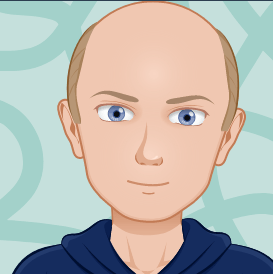
The greatest educational video I saw this year didn’t come from a university department or a school. It wasn’t even created by an instructional designer. In the age of YouTube and TikTok, when every second of our attention counts more than ever, I think there’s a lot to be learned from “content creators”. What makes a great educational video – and how to build one (even if you don’t want one)? Let’s try to find out.
0. Learning and the art of motorcycle maintenance
Meet our model video: “7 Minute Motorcycle Teardown – Mechanic Crash Course” from FortNine, a popular YouTube motorbike channel. You can watch it now, if you like – it’s 7 minutes long. Content warnings include: motorbikes, Covid-19, very mild swearing, traces of banter. If you decide not to watch it, that’s OK – I’ll try to make the list below work even without the visual reference.
I watched this first because of the subject matter, which was relevant to me. Then I watched it again, for the fun of it. Watching it for the third time, I realised: this video is what many learning designers and course creators wish they could make.
I started watching again, and making some notes on what I saw, and why I thought it worked. Here they are – grouped into categories which could become advice / checklist material for your next learning design project.
1. Make a small, life-changing promise; then over-deliver
“You’ll understand how every part works.” This is what Ryan promises within the first 20 seconds of the video. The promised result is small, but life-changing: after watching this, the promise goes, this is what will change in your life.
The video delivers on this promise, and then it goes further. It gives you some physics, some science, some electricity – and a quick peek into how the parts of the bike can be put together or dis-assembled. It shows you the parts and the whole – but the promise doesn’t cover this. It’s just, “here’s one small thing which I will try to change in your reality.”
2. Use pace, frames, and staging to resist context-switching
“Unplug your ChikTok for SEVEN minutes“, implores Ryan before he makes this promise. This is a big ask in a world where context switching and multitasking wreaks havoc inside our brains. The endless scroll of every imaginable social medium hates the thought of standing still, sitting calmly and watching something for longer than a few seconds.
The video is snappy – done in less than seven minutes. It moves fast – the script is pared down, with key things shown as well as (or rather than) described. It speeds things up with skilful stop-motion animation. I can imagine this topic taking a good 45-minute video class: here, we’re done before Led Zeppelin’s “Stairway to Heaven” rings out.
The other thing the video does well is the use of key frames to show that we’re making progress. The initial flat-lay shot establishes the context. Then it is repeated at 01:47, at 03:25 and a few other places – to wrap up and summarise the stage, both in words and visually. This is a clever trick: the video gets cleanly split into several shorter videos in your head.
You can complain all you want about attention deficits, and “kids these days” – or you can borrow the best tricks from the viral playbook to keep eyeballs on your content. Ryan does the latter.
3. Mind your vocabularies
The explanation of the airbox / airfilter is a great example here. He uses simple language to the point of self-parody (“like a box…for air”). He uses a comparison which literally everyone will understand (“otherwise, you get Covid-19 in your engine”). Crucially, though, he shows as well as tells: what’s inside? why does the air filter matter? The shot of particles dust being blown out of the air filter makes it obvious, and is a three-second visual metaphor which explains the function of the component. The visual vocabulary matters just as much as the actual language.
There are other similar examples in the video – the engine scene comes to mind; it’s rich in motion and visuals, and laconically plain in writing. The flat-lay shot I mentioned earlier is a key part in this video’s visual phrasebook: it gives the video rhythm, and – by repeating itself at the very last scene – gives you a sense of completion. Not to mention – it may make you want to watch the whole thing again.
4. Use your audience research to gain confidence about your tone (or question it!)
It’s time to address the laddishness of it all.
In another video, Ryan shares a statistic: 97% of his viewers on YouTube are men.
It is difficult for me to imagine what the implications of such a number would be in actual learning environments. An online course trying to cater to a 97% majority would be a disaster; a college acknowledging that 97% of its graduates are male – a step backwards.
Fortnine is neither of these things. It’s an entertainment channel on a social medium. The creators aren’t always trying to educate – the drive to entertain, to endorse, and to monetise is probably much stronger.
97% percent of anything would not sit well with me. For Ryan, this is a clear indicator of where his content can go. Hence the choice of metaphors – of subject matter – of jokes. And hence, the confidence with which he delivers.
There’s a darker side to this, of course. Skewed audiences lead to silos and echo chambers. Ryan’s is a relatively benign version of it: he’s a motorbike dude, talking to other dudes about motorbikes. But I imagine the 97% number is similar for the Jocko Willinks and Joe Rogans of this world, and there, the discourse isn’t so wholesome any more, and it treats the statistic as its privilege to get even more divisive.
For learning designers, thankfully, things will not always be so clear-cut – and if they become so, then I feel it’s our duty to question and possibly redress any such imbalance.
But audience research should still be done. And insights should still inform how you craft your videos. What’s the pacing you can get away with? How carefully must you edit your language? Will your viewers come from cultures which appreciate a conversational tone – or a lecture?
5. Make it re-watchable
Here, Fortnine is in excellent company. The best videos are the ones you want to immediately watch again – not to learn more, but to appreciate how funny / relatable / clever they are.
Jackie Aina’s make-up videos. Julian Baumgartner’s amazing videos of art restoration. Maangchi’s recipe videos. I could go on, and give you more examples – but you probably have your favourites, too!
I keep coming back to the video above, and to a few others. I find the gags funny, and – after the lockdown nightmare – I enjoy watching the outdoor adventures even more. The channel – and the ones listed above – deliver joy in small, manageable, but addictive doses, and keep us coming back for more.
Compare this with the approach (implicit, but present) of many learning designers, whose goal is to make a huge chunk of learning content that you may never need to (or want to) watch again. More often than not, this ends up in content that’s too long, and has to work too hard to deliver the excessive amount of material it’s planned for.
Maangchi’s 57-second kimchi video, or Ryan’s 7-minute bike teardown, is designed to be watched again and again. They win; they’re the content creators. Your brain wins; it gets the dopamine kick it needs.
And if you learn something along the way, and remember it for longer – hey, that’s added bonus for these content creators.
Except it needs to be the main motivation for the learning designers. So how about doing less…with less…but more often?
(Photo by Volkan Olmez on Unsplash)

I am an editor, author, translator and teacher based in the UK.
I am always looking to get involved in new projects. My areas of expertise:
ELT publishing – print and digital
Language learning
Translation – POL-ENG-POL, non-fiction
Editorial project management
Does it look like we could work together? Download my CV or get in touch via e-mail.